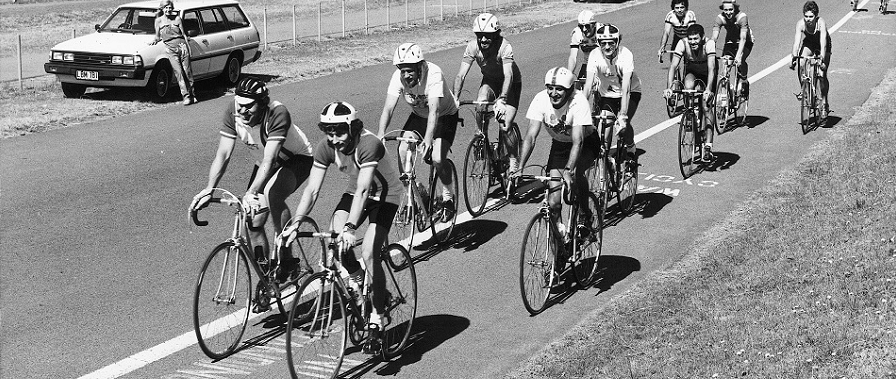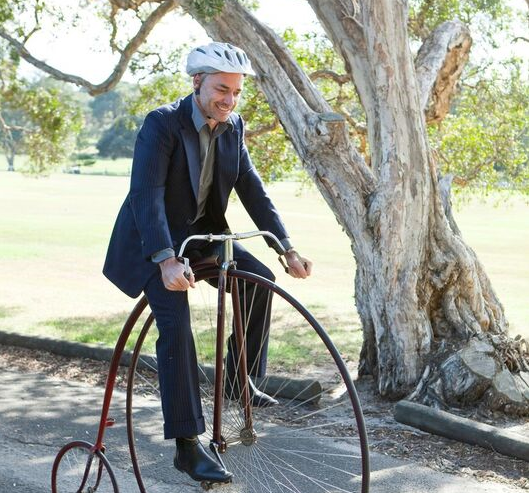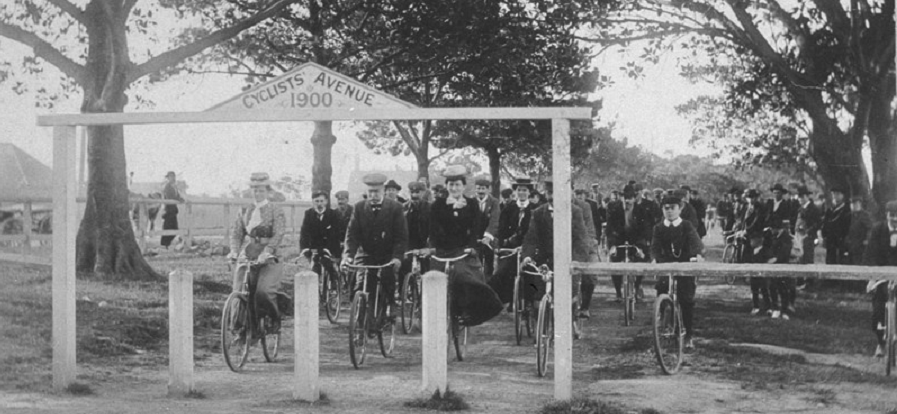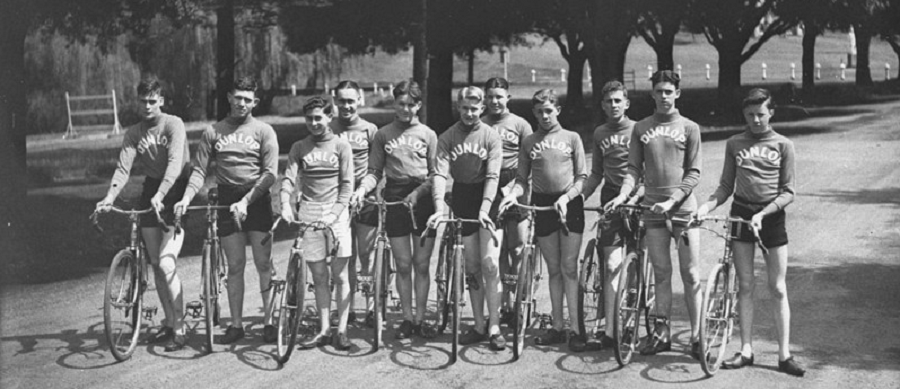In celebration of History week, we decided to do some digging into our historical records and learn more about the history of cycling in Australia. As an efficient, healthy and environmentally-friendly alternative to travel, more and more people are turning to cycling as a primary method of transport.
In the last 200 years, bicycle riding has been a staple in millions of young lives around the world. Whether it is learning and understanding balance as a child, riding competitively or for fitness, convenience or fun, these two wheeled contraptions continue to thrill and excite.
Like the rest of the world, it did not take long for the bike riding ‘fad’ to tighten its grip on Australia. Today it is not only a popular, environmentally sound, healthy mode of transport, but cycling has garnered followers and fans across a range of cycle related sports.
 Cyclists in Centennial Park, 1982
Cyclists in Centennial Park, 1982
200 years since the invention of the modern bicycle
200 years ago, a young and enthusiastic German inventor by the name of Karl Drais created the Laufmaschine or walking machine. The machine was designed to grapple with the dire effects of a volcanic eruption that devastated much of Europe, leaving a need for alternative transportation. Originally designed without pedals, Dais’ design is very similar to today’s balance bike cherished by toddlers the world over.
The Laufmaschine, renamed the Draisine was wildly popular from the moment it hit the streets, and immediately inspired other inventors and enthusiasts to adapt and improve the original design. Thus, was born the ‘velocipede”, which once pedals were added in 1864, became an unstoppable force, fast spreading throughout Europe and the rest of the world.
 The penny-farthing was one of the earlier versions of the modern bicycle
The penny-farthing was one of the earlier versions of the modern bicycle
Coming to Australia
It didn’t take long at all for the velocipede to hit our shores. Some suggest that it was only three years before Sydneysiders were racing and riding bikes through their streets. Records of racing in the Melbourne Cricket Ground a couple of years later have also emerged, suggesting that this two and sometimes three wheeled device was almost immediately popular. Velocipedes of the time weren’t nearly the controllable machines we enjoy today – these bikes had neither brakes nor gears.
The evolution of bikes in Australia
It wasn’t long before the need for speed took bike enthusiasts to embrace the newest technology – the high wheeler, later known as the penny-farthing. With rubber tyres and mildly more control, suddenly riders were able to reach speeds of a trotting horse. The trouble was, they were incredibly difficult to manage, and their height made them less safe. While the penny-farthing was quickly replaced by a much better design, enthusiasts today still enjoy a pedal.
By the turn of the century, the ‘safety’ bike had taken over as the cycle of choice. Not only that, but because of the ingenious design, more and more people were able to control and enjoy the bike. All walks of life were stepping onto the pedals and embracing this new way to get around.
 The opening of Cyclist Avenue in 1900
The opening of Cyclist Avenue in 1900
By 1900 cycling was becoming so popular that Centennial Park opened the Cyclists Carriage, five years before they allowed cars.
Both women and men embraced riding in Australia. In fact, many women found the access and freedom riding gave them a greater sense of independence, so crucial during a time when they didn’t otherwise feel that way.
Over the years improvements and changes have been added and there are now many different kinds of bikes available depending on your purpose. Whether you are riding on road, off road, long or short distances, racing or riding for pleasure, there are a hundred possible modifications available and the biking community embrace every one.
 Centennial Park Cyclists in 1934
Centennial Park Cyclists in 1934
Bicycle riding today
Today more than 4 million Australians ride a bike for recreation or transport every week. As a result, many of the cities around the country have designed and implemented bike tracks throughout their CBDs to encourage safe and prolific riding. Tracks in and out of the city limits are constantly being improved. Even youngsters now have a number of carefully and safely designed tracks to get a handle on the intricacies of riding such as Centennial Parklands Learners Cycleway.
Centennial Parklands is one of Australia’s largest and most popular public park spaces, hosting more than 30 million visits every year. It’s a space for everyone, be it a cyclist, pedestrian, horse rider, motorist or penny-farthing rider. Which is why it’s important to understand the Rules and Regulations, so that everyone stays safe.
Share your photos of your time in the Centennial Parklands with us by tagging us @centparklands.